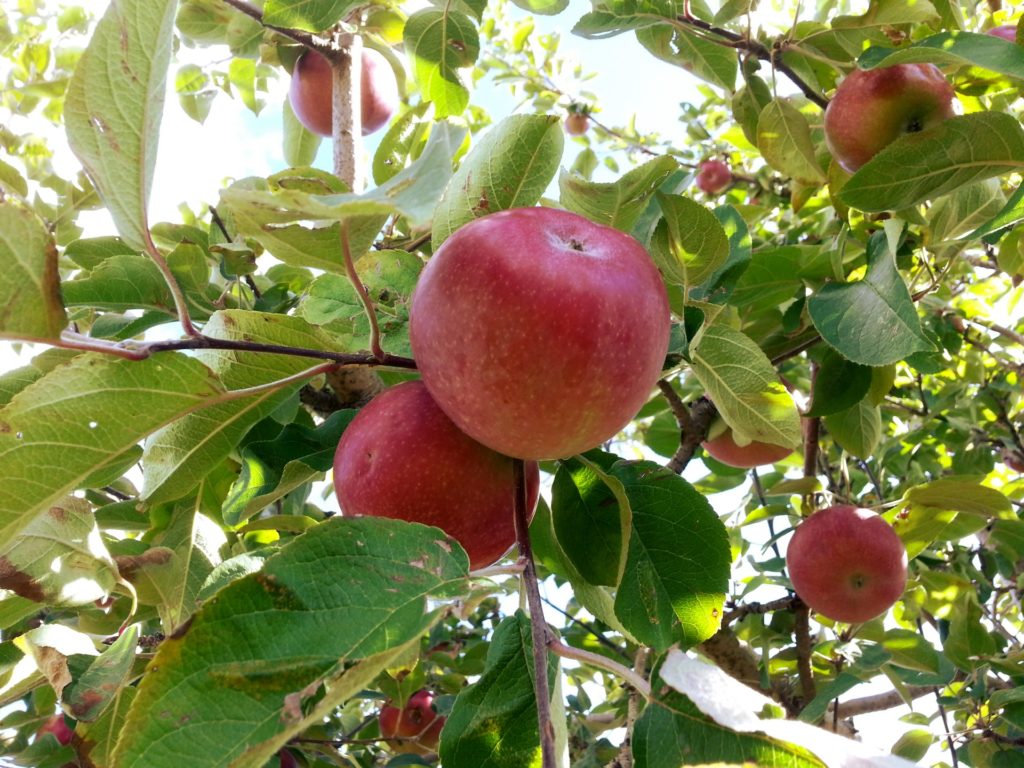With this mild Autumn weather and the first plantings of our winter veggies in and growing strongly, it is a good time to plan for the addition of a few more deciduous fruit trees. We can grow a wide range of fruit trees on the Peninsula to provide us with fresh, delicious produce for much of the year.
The first step in planning your orchard is to carefully consider the siting of your trees. Deciduous trees do not need to be in full sun all year, so you can be a little flexible and creative in your placement of your trees. So, from mid-Spring through to the start of Autumn you will want a good 6 hours of direct sunlight when the sun is higher in the sky, while during the winter months when the sun is low direct sunlight is not as important.
Once you have chosen your site, you may have to adjust the condition of your soil a little depending on where you are. Generally if your soils drain adequately you will be able to grow most of what you want. Apples, pears, quinces and nashi do really well, as do all stone-fruit, persimmon, figs and mulberries. All of these fruit trees can be grown as standards (or stand-alone trees) but you will need to dedicate a fair bit of space to fit them all in.
There are other ways though to be just as productive in your yard while taking up much less space. Two common methods are to grow fruit trees on semi-dwarf or dwarf rootstocks as standards or as espaliers. The advantages of both being the number and variety of fruit trees you can fit into the same space. We generally recommend semi-dwarf rootstocks for suburban blocks.
Espaliering fruit trees along fence-lines or against walls can make use of otherwise under-utilised space and can add interest in your garden while of course providing you with an abundance of fresh produce. You can also grow your climbing and cane fruits in a similar fashion. Trellises erected on fences, walls, sheds and water-tanks make great use of vertical spaces for grapevines, kiwifruit, raspberries and a range of blackberries. These can all be available bare-rooted from around June-August.
As you plan where and how to grow more fruiting plants take time to consider how the various spaces you choose will look during the cooler months when the trees lose their foliage. It’s often a good idea to combine perennials with your deciduous plantings to maintain some colour and structure during winter, which may be in the form of evergreen fruiting plants, perennial herbs and flowers or companion plants. You can also use local and native plants species to compliment your fruit trees.
While growing deciduous fruit trees and climbers can provide a lot of fruit over the warmer months, let’s not forget about the other fruit trees you can grow. Avocados, tamarillos, and a range of citrus fruits could all occupy some room in your garden and can be highly productive if cared for. And if you have a family there are few things more nourishing for young souls and bodies than to forage in a garden full of goodness.
To be able to walk out your door and grab a basketful of fresh, juicy fruit is one of the great pleasures of edible gardening. So replace that old camellia with something that is going to be more productive for you and have a think about other spaces in your yard that can be used to grow more fruiting varieties. You won’t be disappointed.
Happy gardening.


Leave a Reply